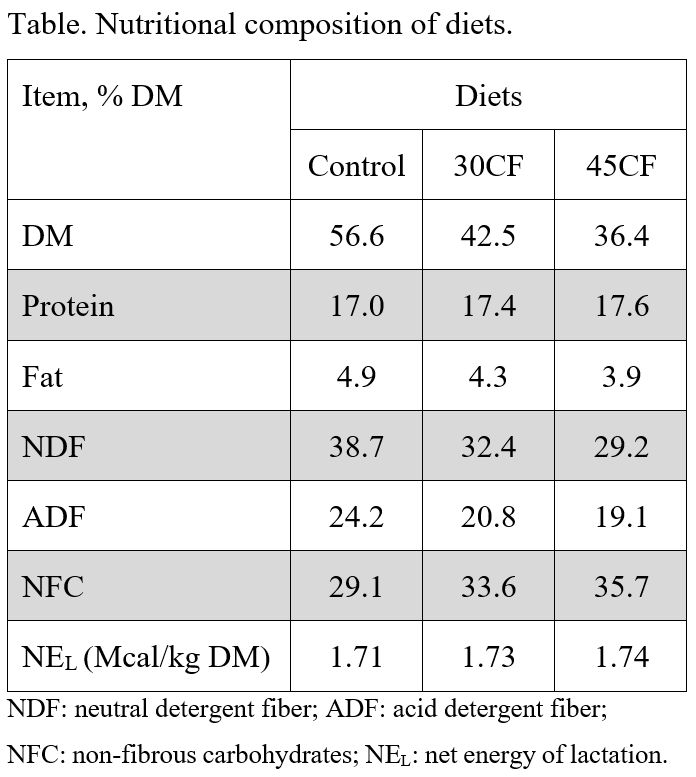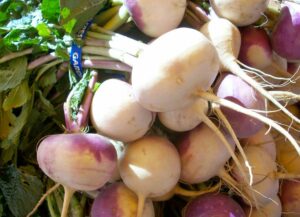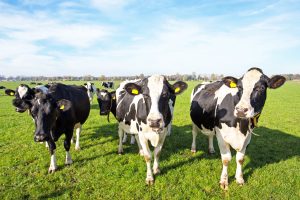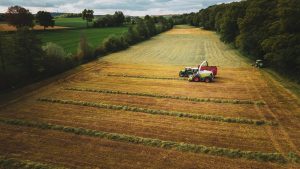María Villagrasa & Fernando Diaz
Milk and its products play a very important role in the diet of thousands of households, so the dairy industry must offer consumers healthy and safe dairy products to encourage their consumption and thus ensure the viability of the sector. Therefore, obtaining quality milk should be considered as an essential priority.
The organoleptic characteristics of milk, its color, taste and smell, are some of the quality attributes and, among them, taste is probably one of the most important factors when evaluating it. This feature is the one that most influences the consumer’s acceptance of the product so that, depending on its taste, it will decide whether it is of good or poor quality and will act accordingly when purchasing it.
The presence of off-flavors in milk may be due to feeding the cow certain feeds or forages. One of them is the rape forage (Brassica napus ssp. biennis). Both the latter and feedstuffs from other Brassica species contain secondary components that can alter the sensory characteristics of milk and even cause nutritional disorders.
However, its nutritional characteristics make it a very suitable feedstuff for livestock: it is highly digestible (75-85% digestible organic matter), contains between 10-20% protein, the ratio of neutral detergent fiber (NDF) is low (18-20%) and high concentration of easily fermentable carbohydrates such as starch (6-11%), sugars (10-15%) and pectin (9% MS).
A study conducted at the Universidad Austral de Chile (Keim et al., 2020) aimed to determine DM intake, ruminal fermentation, sensory characteristics of milk, and productive responses of mid-lactation dairy cows fed increasing amounts of rape forage in the diet.
Twelve pregnant, multiparous Holstein-Friesian dairy cows were assigned to three diets:
- Control: grass silage (67.0%), commercial concentrate (15.5%), soybean meal (2.30%), canola meal (13.9%), and mineral salts (1.30%)
- 30CF: 30% DM basis of grass silage, oilseed and concentrate, were replaced in the same proportions by rape forage
- 45CF: 45% DM basis of grass silage, oilseed and concentrate, were replaced in the same proportions by rape forage.
Rape forage contained: 46.3% leaves, 23.0% petioles and 30.7% stems. The amount of soybean meal remained constant so that the three diets were isoenergetic and isonitrogenous; the amount of vitamin supplements was also not modified. The nutritional composition of the diets is shown in the table.

Canola-fed cows produced more milk
Adding rape forage to the diet had no effect on total daily DM intake (19.5 kg/day) or organic matter intake (17.5 kg/d). With regards to production, the inclusion of rape forage increased milk production compared to the control group (it went from 23.4 in the control group to 25.2 in the 30% rape group and 24.9 kg/day in the 45% canola).
An increase in energy-corrected milk (from 24.3 in the control group to 25.9 kg/day in both groups with canola) and protein production (from 0.73 in the control group to 0.79 in the group of 30% rape and 0.78 kg/day in the 45% canola) as well as an increase in feed efficiency (1.20 vs 1.28 kg of milk/kg consumption of DM, control group vs. 45% canola. On the other hand, fat concentration (3.85%,) milk protein (3.13%), as well as milk fat yield (0.94 kg/day) were not modified with the addition of rape in diets.
Another parameter analyzed was the eating behavior of cows which changed by including rape forage; the time the cows spent eating increased from 252 min/d in the control group to 418 min/d in the group with the highest rape concentration, while rumination time was reduced from 539 in the control group to 338 min/d in the 45% rape group. The high-water content of brassica increases the fresh weight of feed the animal has to ingest which could affect the time spent eating.
Sensory analyses of milk were also performed, the results of which showed that the inclusion of rape forage had no effect on the taste and smell of milk.
Effects of diets on ruminal fermentation
By adding rape forage to the diets, total concentrations of volatile fatty acids increased in the rumen (from 88 in control to 100 mM in the 45% rape group) and molar acetate ratios (64.1 to 67.3%) butyrate (from 14.4 to 16.5%), while the proportion of propionate was reduced (from16.9 to 15.0%).
On the other hand, the average pH of rumen decreased linearly by including rape forage in diets from 6.10 in the control diet to 6.07 in the 45% rape diet. The extent of time when ruminal pH was below 5.8 was 253 minutes/day on average and was not affected by diet, indicating that there was no risk of ruminal acidosis, which occurs when pH is below 5.8 between 284 and 475 minutes/day.
With regards to the concentration of ammonia in the rumen it increased from the control group (8.7 mmol/l) to the group of 45% rape forage (10.9 mmol/l). They also increased urea nitrogen concentrations in blood and milk from 14.2 to 16.6 mg/dL and from 12.5 to 13.0 mg/dL, respectively, as well as nitrogen excreted in milk (114 to 123 g/day), and total nitrogen excreted by the cows (435 to 475 g/d).
This result may have been due to increased nitrogen consumption by cows, since although diets were formulated to have the same amount of nitrogen, cows may have consumed more rape forage leaves than stems, with more protein content in the leaves.
Conclusion
These results indicate that the inclusion of rape forage in dairy cow diets, up to 45% of the DM in the diet, improves milk production and ruminal fermentation without having negative effects on animal health or sensory characteristics of milk.
Reference
Keim, Juan & Daza, José & Beltran, Ignacio & Balocchi, Oscar & Pulido, R. & Sepulveda, Pilar & Pacheco, David & Berthaiume, Robert. (2020). Milk production responses, rumen fermentation, and blood metabolites of dairy cows fed increasing concentrations of forage rape. Journal of Dairy Science. 103. 10.3168/jds.2020-18785.
© 2020 Dairy Knowledge Center. All Rights Reserved.









